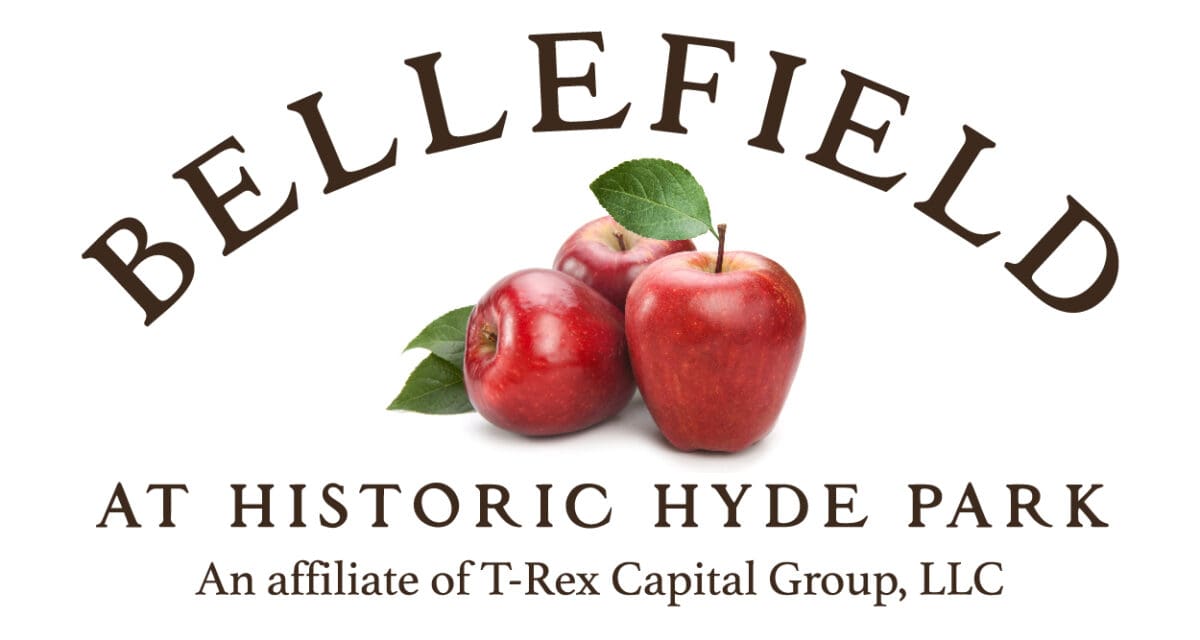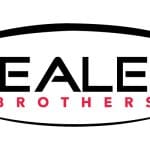By Geoffrey Wilson, Poughkeepsie Journal
From a cursory glance driving up Route 9, it can be hard to parse what progress has been made at Bellefield at Historic Hyde Park.
The $800 million planned “walkable community,” covering 344 acres across from the Culinary Institute of America, has been gestating with different names and features for nearly 15 years.
It may appear as little work has been done since the development broke ground in 2018. But under the surface, developers have made significant progress installing wastewater and sewage facilities necessary for the many amenities planned.
“No one really pays attention to that or knows what’s going on,” said Tom Mulroy, CEO of T-Rex Capital Group, one of the developers. “But of course, when we go vertical people are going to be pretty excited about this.”
Like the site itself, a quick look at a description of the project may not make obvious what the excitement would be about. Two other nearby mixed-use projects, Hudson Heritage just to the south in Poughkeepsie and Eastdale Village to the east in Poughkeepsie, have lapped Bellefield and partially opened.
But while Bellefield may have a similar recipe, its developers promise it will differentiate itself by leaning in to the region’s identity as a culinary destination and bringing in businesses that stand out. That includes “experiential” components, such as breweries and a winery.
“We have celebrity chef restaurants we are talking to now, which would be among our main anchors, and we have a food market and a food hall,” Mulroy said.
They hope to capitalize on the existing draw of the Culinary Institute of America, while also filling the need for high-end hotel space in the northern Dutchess areas.
The full plan calls for two hotels, entertainment amenities and several residential parcels broken into distinct “neighborhoods,” although more than half the acreage will remain wooded or be used for agriculture.
After years of waiting, developers say residents in the coming months be able to see progress at the site, which spans West Dorsey Lane to St. Andrew Road. Bellefield will soon begin construction of its first hotel structure, The Inn at Bellefieland, the second phase of the project, will bring 200,000 square feet of commercial space, 120 multifamily units and 100 flats.
The pandemic led to the latest round of alterations to the plan, with developers adding more residential units — 801 planned in all — amid a hot Hudson Valley housing market that indicates there may be room for multiple newly developed communities. It also drove the cost of the project up, which led to additional economic assistance granted from the Dutchess Industrial Development Agency last month. Several million toward the project has been contributed through county assistance and state economic grants.
“The hotel starts first or early second quarter of 2022, and build-out will take 16 to 18 months,” said Larry Boudreau, president of development of Bellefield at Historic Hyde Park. “At the same time, we’re going to be improving the wastewater treatment plant.”
Melaine Rottkamp, president and CEO of Dutchess Tourism, anticipates the development will be a major draw for local tourism, serving as both a destination and a place to stay for visitors.
“It’s really exciting to witness the progress, and I can’t wait for it to be open to the public,” she said. “Bellefield at Historic Hyde Park will certainly add to the richness of the offerings we are able to market to travelers from all over the world.”
Creating, satisfying demand
The commercial side of the development, which covers 40% of the plans, focuses on experiential retail. Plans include a brewery, a winery and a cidery. Of course, this doesn’t mean the development will feature a full orchard or vineyard.
“Many (of our businesses) are locating a demonstration or showcase venue at Bellefield that have major facilities located somewhere else in the Hudson Valley or New York,” Mulroy said. “They would have a demonstration and tasting, and if the customer wants to actually tour the massive manufacturing facilities elsewhere they could do so.”
Other plans call for a culinary research and development center, art galleries, a beer garden and an amphitheater for entertainment.
The first step, however, is to create places for tourists to stay.
“The hospitality inventory is really not anywhere near as good as Napa,” Mulroy said, comparing the Hudson Valley to the famous California destination for wine lovers. “That’s what’s missing – quality hospitality. I think it’s going to drive more people here.”
Rottkamp emphasized the need for hotel rooms, highlighting the various attractions surrounding Bellefield. As of 2020, Dutchess County boasted 46 hotels, inns and motels, totaling 3,286 rooms. However, most larger hotels in the county are located south of Hyde Park, in Fishkill and Poughkeepsie.
“The hotel is particularly important because it better helps us meet the demands visitors have for rooms in the county and especially because it’s so close to the high-traffic national park sites and the CIA,” she said. “It is also conveniently located to Marist College and will become the closest major hotel in Dutchess to Rhinebeck and provide additional lodging options for folks attending the many events at the Dutchess County Fairgrounds.”
Phase two of the construction will not begin until mid-2022, but the development is already seeing interest from potential retail partners.
“I’m not at liberty to say the names yet, but we’re at various stages with letters of intent and great demand for this,” Mulroy said. “We don’t even have brokers listed yet.”
Residents can expect to see progress on phase two of the development by year’s end, Mulroy said.
Complement, not competition
Mulroy acknowledges Bellefield faces competition in the region. Projects like Hudson Heritage and Eastdale Village also tout walkable communities with a mix of residential and retail.
But he feels these developments are necessary for the Hudson Valley to grow as a tourist attraction.
“I think anything positive in the area or the region is good,” he said. “The more the better. You need critical mass. Napa Valley is not made up of one winery, and if it was, it wouldn’t be successful.”
Indeed, Rottkamp described Bellefield as a complementary addition to Dutchess’ existing offerings.
“The food-based businesses that will be a part of the Bellefield campus don’t compete with those offerings, they enhance them by providing additional opportunities to sip, savor and relish in all the deliciousness that is Dutchess,” she said.
Hyde Park is also anticipating the opening of the Asahi Shuzo sake brewery this year.
Changes to the development
Like all things, the COVID-19 pandemic had a role in shifting Bellefield’s development timeline.
Mulroy said the development’s construction lender put work on pause halfway through 2020. Despite cost increases, the development is set to be back on track early this year.

“We found a construction lender ready to go and that’s supposed to close in the next month or so,” he said. “And we have our building permits ready to go.”
Bellefield received state economic development grants in 2015 and 2016 totaling $4.25 million. It also has been helped by working with the Dutchess Industrial Development Agency.
The project’s Payment in Lieu of Taxes agreement has a roughly $966,000 estimated real property tax exemption, according to IDA documents. It was originally approved for a $1.9 million sales tax benefit and a $270,000 exemption in mortgage recording tax.
Last month, Bellefield was approved for an additional $433,000 approximate sales tax exemption, a $77,250 mortgage recording tax exemption and a $107,365 mortgage recording tax exemption specifically for the construction of a visitor’s center and related infrastructure as part of phase two funding.
However, developers claim the economic impact of the project will be measured in the hundreds of millions over the next decade, and 370 full-time jobs when it is complete.
While the pandemic drove the cost of building up, it also led to developers adapting plans to place a greater emphasis on residential options, with the housing market hot.
According to the Mid-Hudson Multiple Listing Service, which tracks home sales throughout Dutchess County, the median selling price of a single-family detached home in 2021 was 13.9% higher than in 2020, a year in which the market already was seeing a boost from a flood of buyers looking for homes in the Hudson Valley. Housing inventory has also been plummeting after nearly two years of rapid activity.
Bellefield was originally split almost evenly between retail and residential space; now, the development comprises 60% residential property and 40% retail.
“That’s what the market is demanding,” Mulroy said.
Geoffrey Wilson: gwilson@poughkeepsiejournal.com; 845-437-4882; Twitter: @GeoffWilson_



